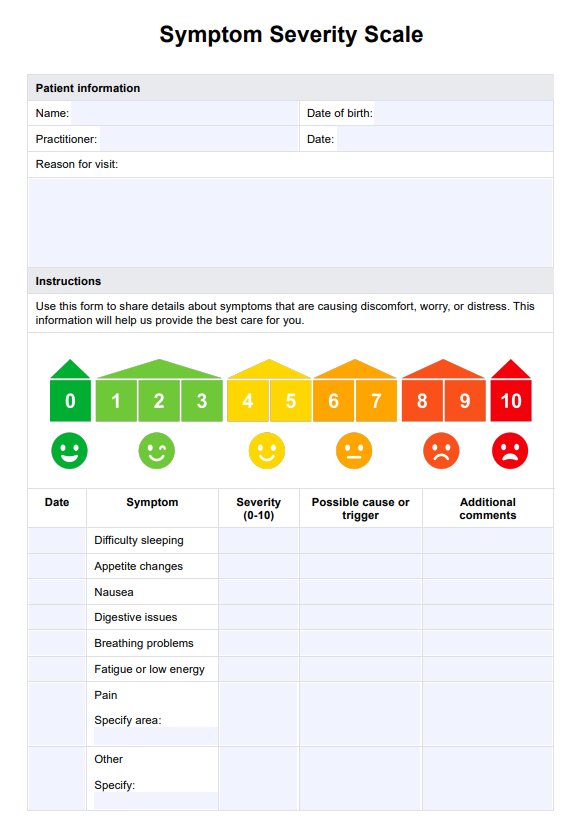The Symptom Severity Scale (SSS) is a concise tool for assessing and tracking symptom intensity and severity, commonly used in clinical practice. It provides healthcare professionals with a standardized way to measure symptom and functioning severity across various conditions, including carpal tunnel syndrome and chronic pain.

Symptom Severity Scale
Access our free Symptom Severity Scale to assess, track, and manage symptom intensity effectively. A concise, reliable tool for better patient care and monitoring.
Symptom Severity Scale Template
Commonly asked questions
The SSS is easy to integrate into clinical workflows, offering a concise tool for tracking symptom intensity aiding. It captures the life outcomes and health status of patients by enabling them to rate their symptom severity in a structured format.
Symptom severity can be measured using a visual analog scale (VAS) or numerical rating scale, where patients rate their symptoms on a scale of 0 to 10, with 0 being no symptoms and 10 being the worst imaginable. Patients mark their perceived symptom intensity, which is then recorded and monitored over time to track changes. This simple, subjective method provides valuable data for evaluating treatment effectiveness and guiding clinical decisions.
EHR and practice management software
Get started for free
*No credit card required
Free
$0/usd
Unlimited clients
Telehealth
1GB of storage
Client portal text
Automated billing and online payments











